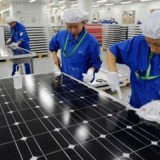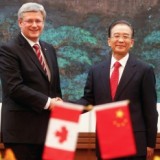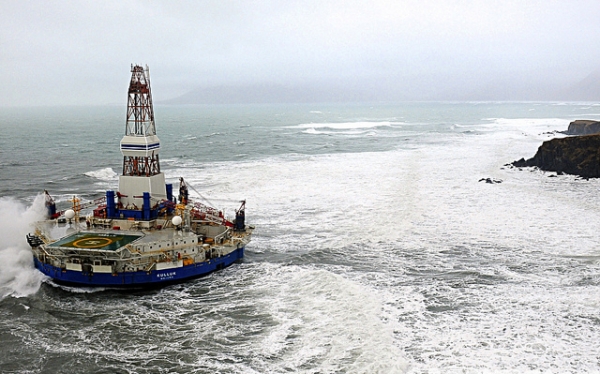Both the Intergovernmental Panel and Climate Change and the International Energy Agency have concluded that public policies, rather than the availability of resources, are among the key determinants for a shift from fossil fuels to clean technology development and deployment. Public banks are critical agents for change along these lines.
Public financial institutions and the green economy around the world
Starting with some of the largest public banks, in July 2013, both the World Bank and the European Investment Bank announced that they will limit to the bare minimum investments in fossil fuel projects, while shifting the lion’s share of their respective energy investments to renewables.
The World Bank’s Jim Yong Kim – the first scientist to head the institution – said it is impossible to tackle poverty without dealing with the effects of a warmer world. “We need affordable energy to help end poverty and to build shared prosperity. We will also scale-up efforts to increase renewable energy and improve energy efficiency – according to countries’ needs and opportunities.”
Based on perspectives not very different from that of the World Bank, in July 2013, The European Investment Bank (EIB), in line with the current European Union climate policy, announced it will implement new lending criteria that skew heavily towards renewables and screen out nearly all coal and lignite plants.
The significance of the EIB shift is illustrated by the fact that the EIB invests, lends and leverages $13.2B/year for energy initiatives. The leveraging of EIB investments in turn fosters private financing, especially important for the capital-intensive offshore wind sector. Many offshore wind projects have benefited from the low cost EIB loans in recent years.
In the UK, the Green Investment Bank, headquartered in Glasgow, was created in 2012 with $3.6B (£3B) in initial capital to carry it through until 2015. Its mission is to respond to the specific financing challenges of commercial green infrastructure projects by tackling the finance gaps which remain despite the advent of new government policies. Like the EIB, this mission includes leveraging its investments to bring in other lenders and investors.
To raise additional capital, GIB’s capital base is, and will be, regularly reinforced with pollution permit proceeds and the newly announced carbon tax revenues. Beginning in the 2014-2015 period, bonds will be issued to raise additional capital.
In Germany, the state bank, kfw, is backing offshore wind development to the tune of $7.2B (5B€).
Meanwhile, the Chinese Development Bank (CDB) has been a key player in making China the world’s largest clean tech player. In 2012, total investments in renewables was $67.7B, compared to its closest rival, the US, with $56B in investments in that same year.
The CDB is a formidable player, especially because it appears to have no limits on the billions of dollars with which to work. About 2 years ago, the CDB committed a whopping $45B over 5 years to smart grid development and deployment. Smart grid platforms are the key to the massive integration of intermittent renewable energy production, such as energy from wind and solar sources, by storing surplus energy for redeployment as required.
More recently, the CDB provided Goldwind, a state-owned wind turbine manufacturer, with $6B to finance international business development. Similarly, Ming Yang, a smaller Chinese turbine manufacturer, acquired $5B from the CDB for loans and credit facilities between 2011 and 2015 to prepare for its entry into international markets.
This significant CDB support for China’s clean tech sectors has contributed to accusations of global clean tech dumping – specifically from the US and the European Union. Both the US and the EU have responded to the alleged dumping by imposing steep tariffs on imports of clean tech products from China.
By contrast, Canada has taken an opposite course by being oblivious to the problem of dumping of clean techs by China. To this effect, the proposed Canada-China trade deal stipulates that there will be no commercial barriers applied to environmental technologies. Evidently, the Harper regime is prepared to give China what it wants, in order for Canada to sell tar sands oil them. Either the Harper administration is unaware of the significance of China’s request, it simply does not care, or a combination of both!
Yet another innovative model for public financial institutions to support domestic clean tech manufacturing is that of Brazil’s Banco Nacional de Desenvolvimento Economico e Social. As of January, 2013, Banco Nacional requires that wind turbine manufacturers source 60% of components in Brazil and produce or assemble in Brazil at least 3 of the 4 main wind technology components – towers, blades, nacelles and hubs – between now and 2016. Under the Banco Nacional model, turbine makers have to meet the staggered manufacturing phases established by the bank, which will be stepped up every six months, until 2016.
Turning to the US, there the US Export-Import Bank, which represents 7 US government agencies, was created to finance renewable energy projects in emerging markets and, most important, to support the US clean tech industry with its requirement for 30% US content. India, one of the bank’s 9 key markets, accounted for approximately $7B of the its worldwide credit exposure as of the end of fiscal 2011. Another example of Ex-Im Bank loans was the $1B credit package to fund wind power development in the Mekong Delta, Vietnam, in collaboration with the Vietnam Development Bank.
Lastly, there is the pension fund green investment model, such as that established by Denmark’s Dong Energy. Dong is 75% owned by the Government of Denmark and is involved in 30% of all offshore wind projects in the world. Currently, Dong uses Danish pension funds for its financial activity in offshore wind projects in Denmark and partners with the Japanese trading firm Marubeni for equity financing for projects outside Denmark.
These government and pension fund connections have translated into Dong being a very special kind of energy investor in that 85% of its current portfolio is associated with fossil fuels and 15% renewables – but its mission is to reverse this ratio by 2040.
Canada falling behind
With the examples of the World Bank, the European Investment Bank China, the UK Green Investment Bank, Germany’s kfw, the Chinese Development Bank, the US’ Ex-Im Bank and Brazil’s Banco nacional, showing the way to the effect that publicly funded investment institutions can play critical roles in assuring a migration to renewables and clean techs, the question to raise in Canada is as follows: Why can’t Canada do similar things via the Business Development Bank of Canada (BDC) and Export Development Canada?
Indeed these Canadian investment vehicles offer excellent options for the financing the development of Canada’s clean tech sectors. The BDC, like the other institutions mentioned in this article, could leverage its venture capital funds to attract additional support from Canada’s private banks and financial cooperatives. What an excellent way to take on the challenge of reaching US equivalency with regard to 20% of venture capital activity in 2011 and 2012 going to clean tech sectors.
As well, the BDC could take a page from Brazil’s Banco Nacional de Desenvolvimento Economico e Social and include Canadian content requirements, thus assuring optimal benefits for Canadian economic development and job creation. It is conceivable that BDC-supported local economic development along these lines could fly under the radar of free trade agreements.
As for an approach for supporting Canadian exports of clean technologies, the models described like those of the Chinese Development Bank and the US Export-Import Bank, may be tough acts to follow, since these institutions have billions of dollars to work with. Nevertheless, the fact that the US Ex-Im Bank brings together 7 US national government organizations, suggests this US model could provide some insights for a made-in-Canada model. For example, if the Canadian International Development Agency would partner with Export Development Canada, the Government of Canada would be able to support the setting up of clean energy micro-grids in isolated communities without necessitating the prohibitively expensive land infrastructure connections to distant, centralized electricity generation plants.
Canada’s pension funds could also have a role to play, along the lines of Denmark’s partially pension-funded Dong Energy. There are Canadian precedents for major investments of pension funds in clean tech sectors. For instance, in February, 2013, the Caisse de dépôt et placement du Québec – the financial arm for Quebec’s pension fund – invested $757M to purchase half of Dong Energy’s 50% share in the world’s largest offshore wind energy project, the UK’s 850 MW London Array. Just prior to that, in January, the Caisse purchased $500M in shares of 11 Invenergy wind farms in the US and Canada, representing 1500 MW and including 2 wind projects in Canada, one of which is in Quebec.
This raises a second question: why can’t the Canada Pension Plan Investment Board (CPPIB) create a clean tech portfolio to optimize Canadian participation in one of the world’s fastest growing industries for job creation, the clean tech sector?
From my previous dealings with the CPPIB, I know that their answer is that their job is to get the maximum return for pensioners and, consequently, no particular preference is given for Canadian investments. This is faulty logic for 2 reasons.
First, it is not unusual for investment vehicles to be associated with more than one objective. Second, and most importantly, investments in growth sectors in Canada that offer high-paying jobs would bring additional revenues for the CPPIB in the form of greater contributions from both employers and employees – in addition to the traditional form of returns on investments. Indeed, from time-to-time, the Caisse has adopted priorities for investments in Quebec with similar motivations.
It can be done
In conclusion: 1) innovative clean technology roles for the BDC and EDC to support and leverage venture capital and finance exports and 2) the creation of a clean tech portfolio for the CPPIB, could both significantly help Canada catch up to its competitors in the global migration to the high-growth and high-job creation green economy, all while making good money in the process. Earnings from completed projects would in turn finance more projects. These are opportunities that make good sense for Canada to embrace.
As Jack Layton used to say, “Don’t let them tell you it can’t be done.”
Will Dubitsky worked for the Government of Canada on sustainable development policies, legislation, programs and clean tech innovation projects/consortia. He lives in Quebec.











